On any traveler’s phone, nestled between the notes app full of packing lists and the dream trip Pinterest boards, you can find Duolingo. It’s the free app that makes our fantasies of ordering in French at a Parisian café feel just within reach. As a long-term but casual user of the app, however, I frequently ask myself—could I become fluent in a language using only Duolingo if I used it every day?
To answer this question, I dusted off the old scientific method (loosely applied) and put the app to the test.
Editor’s Note: This test is meant to be a broad examination of Duolingo’s features. It is not intended to represent the experience or function of all available Duolingo language courses or app functions.
How Does Duolingo Work?
Duolingo is a language app that gamifies the learning process. With a host of characters, experience points, daily practice streaks, hearts to track your in-game health, and a monetary system of gems (which you can, of course, supplement by watching a few ads), it keeps users coming back by encouraging them to maintain their stats. Keep practicing to earn your place on the leaderboard and fight to keep your spot in the gem-themed leagues.
Duolingo offers both a free and paid tier of their service. While both the free and paid versions of the app share all the same baseline material, the paid edition is ad-free and offers features such as unlimited hearts, personalized lessons, access to progress quizzes, and the ability to test out of any level rather than just the beginning few. The best part is that one subscription covers all courses—no need to pay per language.
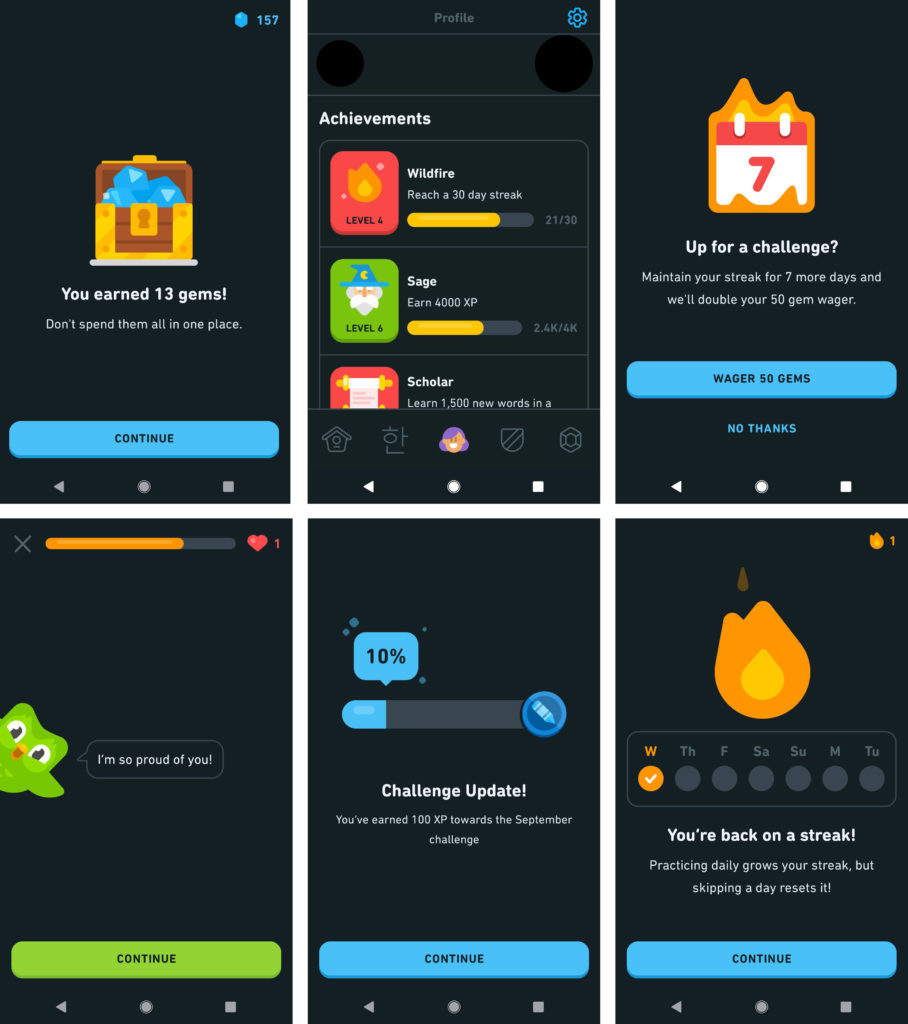
The app currently offers 37 languages for English speakers, four of which are in beta testing.
The Test
To put the app, and my linguistic ability, through its paces, I chose three languages to practice for a period of one month (I started out determined to only use the app’s free tier—read on to see how long that resolution lasted). I selected the languages using the following criteria:
- One language I have already studied with in-person instructors (Spanish)
- One language I have never studied but predominantly uses the Latin alphabet (German)
- One language I have never studied and uses a different alphabet (Korean)
Duolingo Spanish
After testing into a higher starting level in Spanish, I found that the initial lessons were a great review and appropriately challenged my rusty skills. After gaining ten “crowns”, earned by completing lessons, I unlocked the app’s listening comprehension practice called Stories. I find that truly helpful speaking and listening exercises are hard to come by without in-person instruction, so this quickly became a favorite feature of mine.
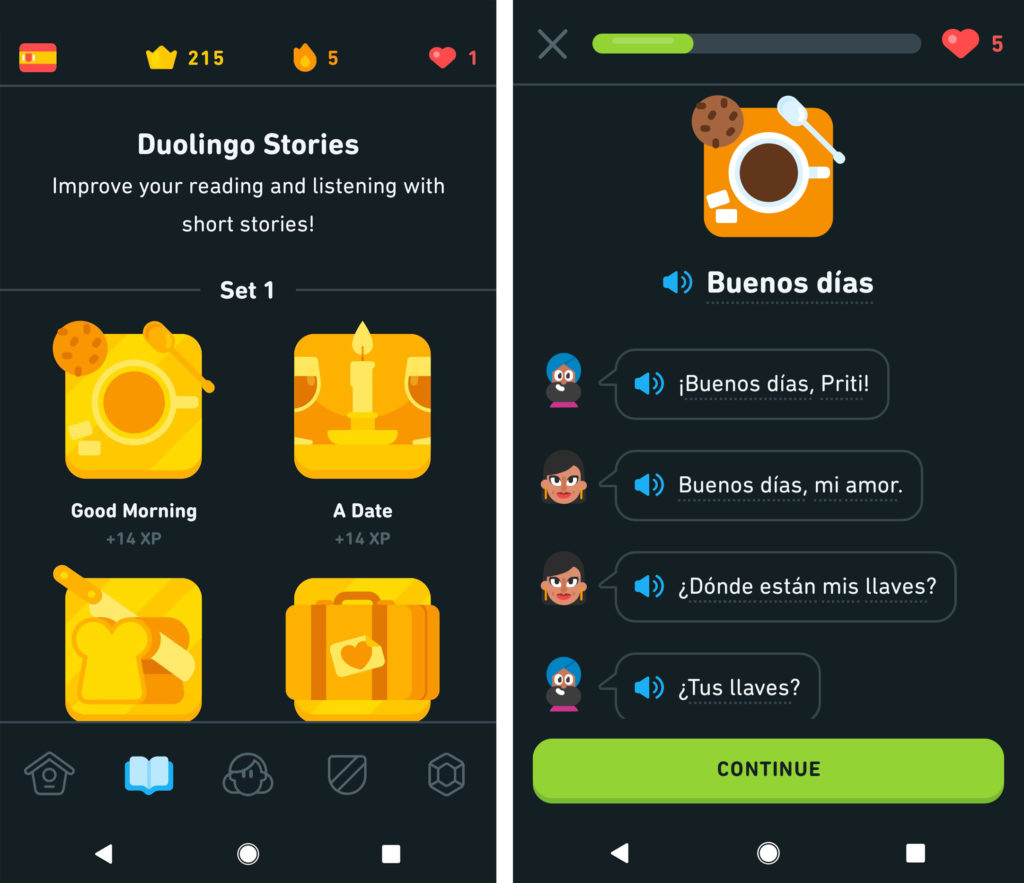
DuoLingo Podcasts (available on Google Podcasts, Apple Podcasts, and Spotify) is another major win for listening practice. The episodes tell stories in the user’s target language along with narration in the user’s native language to help guide understanding. Whether or not I continue practicing Spanish with the app, I’ll be adding this series to my listening library.
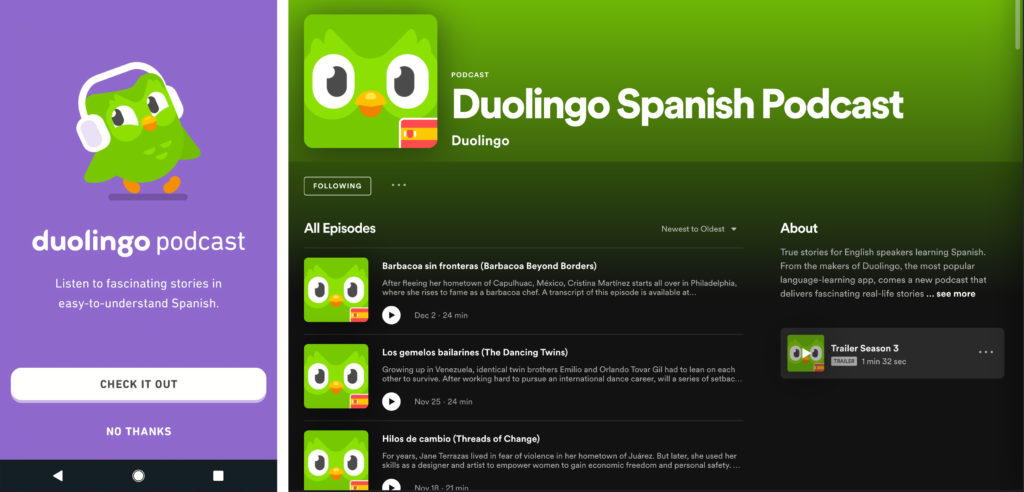
Duolingo German
Tackling the new languages went a little less smoothly. It only took me one week to cave and sign up for the two week free trial of DuoLingo Plus. Since the free version of the app makes you wait to refill your hearts after five wrong answers, the $6.99/month premium version is worth it for anyone seriously trying to learn a new language from scratch. The paid Plus tier allows infinite hearts, which let me immediately correct my mistakes and reinforce good habits rather than waiting hours to review what went wrong. I could have earned a bonus heart here and there by completing extra lessons, but it was disheartening to earn back a bonus life only to lose it on a minor mistake a few minutes later.
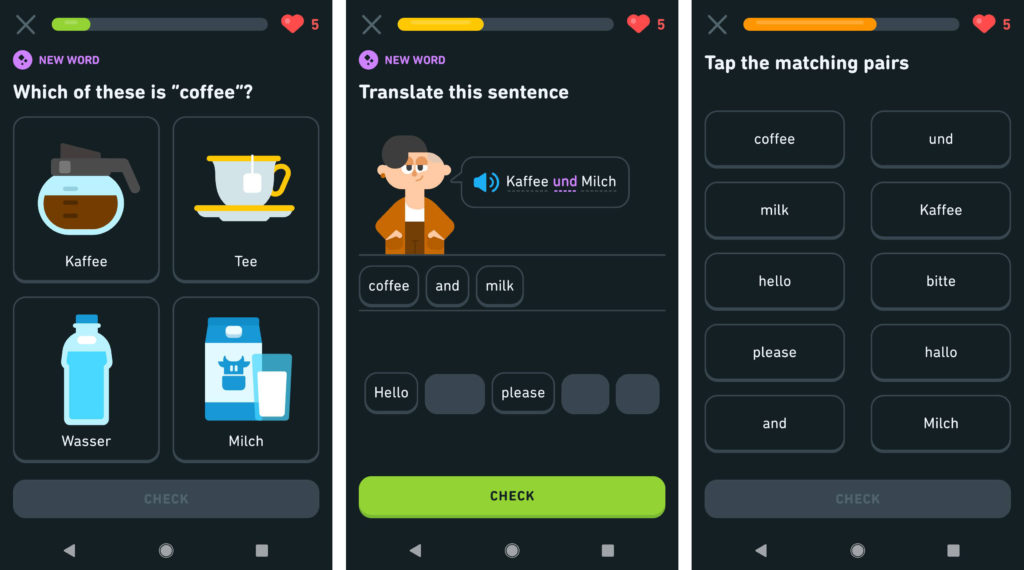
On a positive note, the Tips feature (available in the free and paid version of the app) was a life-saver in the German course when struggling with pronunciation and grammar—two elements that are not always addressed as thoroughly in the main lessons. This feature is not available for every lesson in every language however, something I discovered as I moved forward in the Korean course.
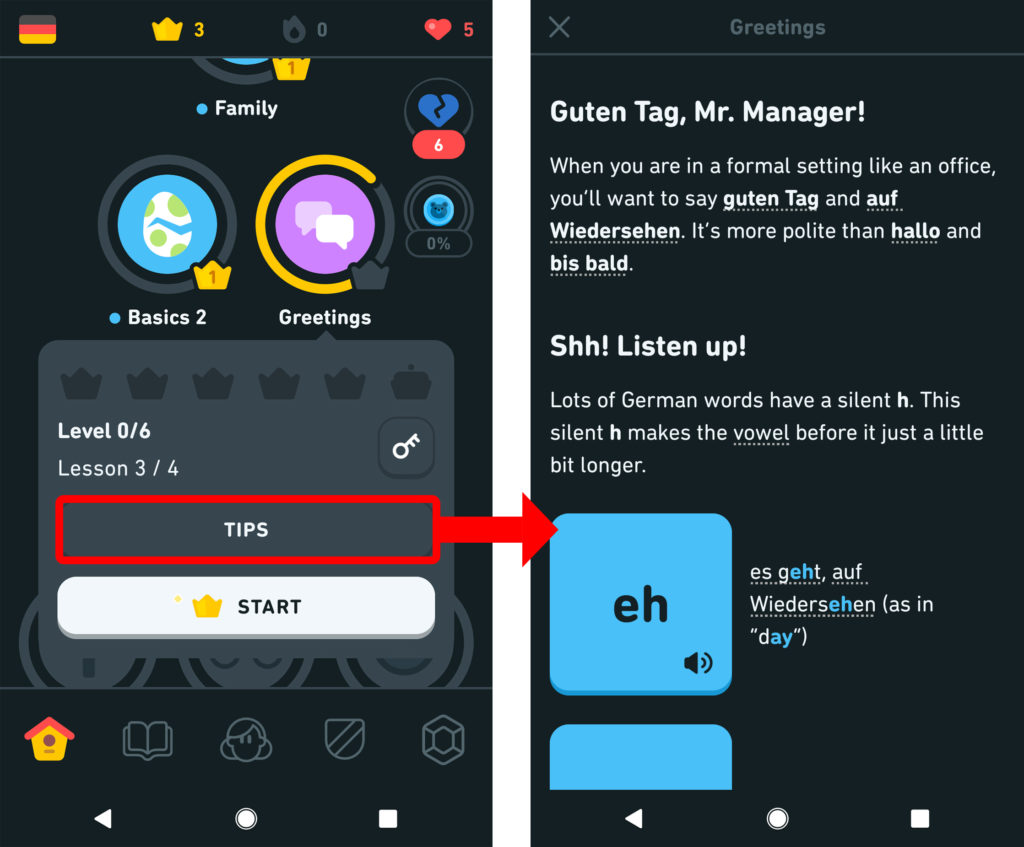
Duolingo Korean
Learning Hangeul, the Korean alphabet, was by far the most challenging part of the three courses. I had to take advantage of every resource the app provided.
A handy feature of this particular course is the separate tab where users can walk through a granular breakdown of reading, writing, and pronouncing letters and characters. These mini-activities were more in-depth than the main alphabet lessons and were responsible for many satisfying “A-ha!” moments as I connected characters to vocab. I checked out a few other languages in the “Classes for English Speakers” section and saw this feature included across several of their language courses.
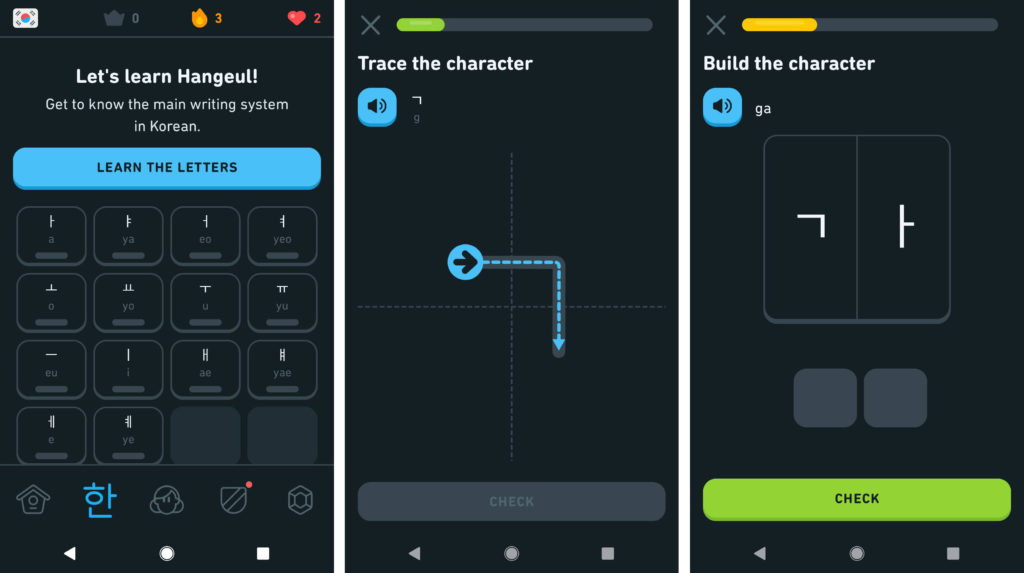
For true beginners, I believe that these lessons would need to be supplemented, whether with self-guided practice or additional learning materials, to gain a real mastery.
Final Thoughts
After four weeks of rigorous scientific investigation, the answer to the question of whether Duolingo can effectively help you learn a language is: It depends.
For users who already have a level of fluency in a language and are looking to maintain their skills, this app is a home run. For users tackling a new language, it depends heavily on learning style and language goals. Someone who struggles with self-motivation may find that a more traditional language learning software or local classes is a better fit. Someone who is just looking to master a few simple phrases for an upcoming vacation may be better served by a quick Google Search or using Google Translate.
Do I think you can become fluent with Duolingo alone? No. Saying that would be like saying you can learn to build a boat from only YouTube tutorials and the materials in your garage. It’s a wonderful starting point that can take you surprisingly far, but eventually you’ll need to expand your pool of resources. However, if the format works for you, this app provides a robust set of tools to guide your learning journey until you’re ready to leave the Duolingo owl’s proverbial nest.
Duolingo Is Great For:
- Learners who are highly self-motivated
- People who are refreshing a language they have some level of fluency in
Duolingo Is Less Suited For:
- People who struggle with self-guided learning
- People just looking learn necessary words/phrases for a quick trip
Tips and Hacks
- If available, take advantage of the Tips button—this is where you’ll get most of your grammatical explanations
- After earning 10 Crowns or reaching the first Checkpoint, take advantage of Stories to practice listening comprehension (available for English Speakers learning Spanish, French, German, and Portuguese and Spanish, Portuguese, and Chinese speakers learning English)
- Since you can’t skip lessons unless you test out, don’t start the course on the plane ride to your destination expecting to have the basics down by the time you land (but if you really want to give a shot, make sure you download your upcoming lessons for offline learning)
You Might Also Like:
• The 8 Best Ticket Websites for Booking Day Tours and Travel Activities• The Hottest Travel Tech for Summer 2023
• The 6 Best Quiet Luxury Pieces for Travelers
• Panama Travel Guide: What to Do in Panama
• Is Amazon Prime Day Worth it for Travelers?
We hand-pick everything we recommend and select items through testing and reviews. Some products are sent to us free of charge with no incentive to offer a favorable review. We offer our unbiased opinions and do not accept compensation to review products. All items are in stock and prices are accurate at the time of publication. If you buy something through our links, we may earn a commission.
Related
Top Fares From
Today's Top Travel Deals
Brought to you by ShermansTravel
Shop and Save with Country Inns...
Patricia Magaña
 Hotel & Lodging Deals
Hotel & Lodging Deals
$229 -- Chicago: Discounted Rates and...
Francesca Miele
 Hotel & Lodging Deals
$229+
Hotel & Lodging Deals
$229+
$188 -- Honolulu: Save on Oceanview...
Abigail Lamay
 Hotel & Lodging Deals
$188+
Hotel & Lodging Deals
$188+




